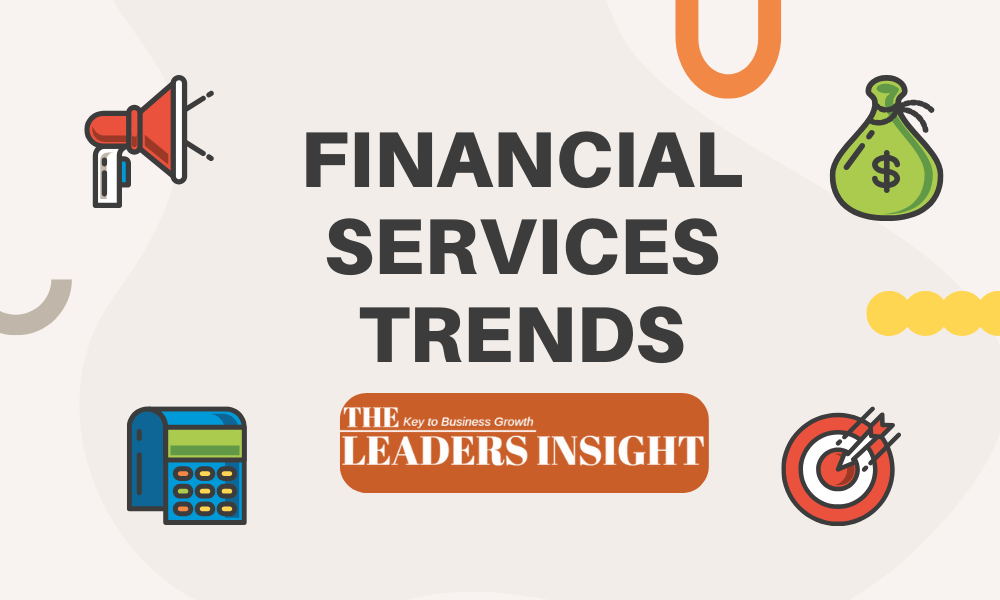Finance: Key Trends Shaping the Future of Financial Services

The Rapid Evolution of Finance
In 2024, the finance industry is undergoing significant changes driven by advancements in technology, shifting regulatory landscapes, and evolving consumer expectations. From the rise of decentralized finance (DeFi) and central bank digital currencies (CBDCs) to the increasing role of artificial intelligence (AI) in financial decision-making, financial institutions are adopting innovative strategies to stay competitive. This article explores the key trends reshaping the finance industry and what they mean for businesses and consumers alike.
Decentralized Finance (DeFi): Redefining Financial Services
Decentralized finance (DeFi) continues to disrupt traditional banking and investment models in 2024, offering consumers greater control over their assets without the need for intermediaries. DeFi platforms leverage blockchain technology to provide decentralized lending, borrowing, and trading services, allowing users to access financial products with greater transparency and lower fees.
According to CoinDesk, the total value locked in DeFi protocols exceeded $200 billion in 2023, and the sector is expected to continue growing as more users embrace decentralized financial solutions. Popular platforms like Aave and Uniswap are leading the DeFi revolution, providing users with peer-to-peer services and enabling more efficient asset management.
Central Bank Digital Currencies (CBDCs): The Future of Digital Money
As digital currencies gain momentum, central banks around the world are exploring the development of Central Bank Digital Currencies (CBDCs) as a way to modernize financial systems. In 2024, several countries are expected to launch pilot programs for their own CBDCs, with China’s digital yuan and the European Union’s digital euro among the most advanced initiatives.
CBDCs aim to offer a secure, government-backed digital currency that can complement or replace physical cash. According to The Bank for International Settlements (BIS), over 90% of central banks are researching or developing digital currencies. These initiatives are expected to improve financial inclusion, enhance payment efficiency, and reduce the costs associated with cash handling.
AI and Machine Learning: Transforming Financial Decision-Making
Artificial intelligence and machine learning are transforming how financial institutions manage risk, analyze data, and make strategic decisions. In 2024, AI-driven analytics are being used to assess credit risk, detect fraud, and provide personalized financial advice to consumers. According to PwC, the use of AI in financial services can increase efficiency by up to 40%, enabling firms to streamline operations and enhance customer experiences.
Companies like JPMorgan Chase and Goldman Sachs are investing in AI to improve algorithmic trading, automate compliance processes, and offer tailored investment solutions to clients. Additionally, fintech startups are leveraging AI to provide digital banking services and robo-advisory platforms that cater to individual investors.
Sustainable Finance: Investing in a Greener Future
Sustainable finance is gaining traction in 2024 as investors and financial institutions prioritize environmental, social, and governance (ESG) factors in their decision-making. According to Morningstar, global sustainable fund assets reached $4.5 trillion by the end of 2023, reflecting a growing demand for responsible investing.
Financial institutions are launching green bonds, sustainability-linked loans, and ESG-focused funds to meet the needs of environmentally conscious investors. Companies like BlackRock and Vanguard are leading the charge, offering a range of ESG investment products that align with the United Nations’ Sustainable Development Goals (SDGs).
Open Banking: Empowering Consumers with Financial Data
Open banking is reshaping how consumers interact with financial services by allowing third-party providers to access their financial data (with consent) and offer tailored products and services. In 2024, the global adoption of open banking is accelerating, enabling greater competition, innovation, and consumer choice in the financial sector.
According to Accenture, over 40% of consumers globally are expected to use open banking services by 2025. Fintech companies like Plaid and Yolt are facilitating data-sharing between banks and third-party providers, allowing consumers to manage their finances more efficiently, access better financial products, and receive personalized financial advice.
Cybersecurity in Finance: Safeguarding Digital Transactions
With the increasing digitization of financial services comes the heightened risk of cyberattacks. In 2024, financial institutions are prioritizing cybersecurity to protect customer data and secure digital transactions. According to Cybersecurity Ventures, the financial services sector is expected to spend $200 billion on cybersecurity measures by 2025 to address rising threats such as phishing, ransomware, and data breaches.
Companies like IBM and Palo Alto Networks are providing advanced cybersecurity solutions that use AI and machine learning to detect and prevent attacks in real time. Financial institutions are also adopting zero-trust security models and enhancing encryption protocols to protect sensitive information.
Digital Payments: A Cashless Future
The rise of digital payment solutions is accelerating the shift toward a cashless society in 2024. With the widespread adoption of mobile wallets, contactless payments, and QR code transactions, consumers are increasingly relying on digital payments for everyday transactions. According to Statista, the global digital payments market is projected to reach $12 trillion by 2026.
Companies like PayPal, Square, and Stripe are leading the digital payments revolution, offering secure and convenient payment solutions for consumers and businesses alike. Central banks and regulators are also embracing this trend by developing frameworks for digital payments, ensuring secure and efficient transactions in a digital-first economy.
